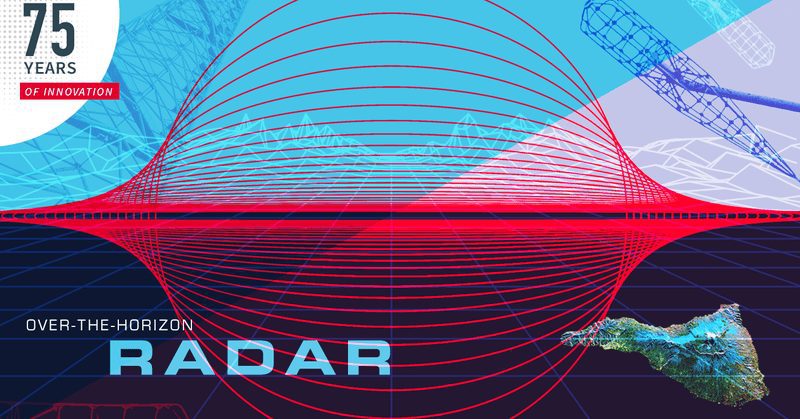The 75 Years of Innovation series highlights the groundbreaking innovations spanning from SRI’s founding in 1946 to today. Each week, SRI will release an innovation, leading up to its 75th anniversary in November 2021.

The wide aperture radar facility (WARF) was used for decades of over-the-horizon (OTH) research
Over the horizon radar: how to see the OTHR side
Imagine being able to see around corners or over the horizon. This would undoubtedly be a useful skill if only to preempt an embarrassing meeting with a person you want to avoid. In this story, however, the horizon isn’t the one we see with our eyes. Instead, this is about the radar horizon, the furthest distance from an emitter that radar can detect.
Stanford University laid the groundwork for developing radar that can see over the horizon with its wide aperture research facility. SRI took over this development from Stanford in the late 1960s and, over the decade following, transformed the use of radio waves to detect faraway objects.
How radar’s horizon was expanded by SRI
Radar is an acronym for radio detection and ranging. In its most basic form, radar works by transmitting short burst radio signals from an antenna toward a chosen location. A receiver detects echoes from any objects that are in the path of the radio signal. The distance to an object is calculated from the time difference between the pulse transmission and the echo’s arrival.
Radar was first discovered by physicist Heinrich Hertz in 1886. Hertz realized that electromagnetic waves could be reflected from various objects, and he subsequently focused these waves into beams using reflectors. It took decades for this early radar to be developed into something practical and radar saw its first widespread use during World War II when used to track enemy aircraft.
While this basic radar was very useful, it had significant limitations. Radio signals move in straight lines and need a clear line of sight between the antenna and the object being detected. Interference and dispersion, caused by such things as weather, atmospheric conditions or other radio waves, can also reduce the distance radar signals can travel and generate false-positive identifications. At best, this radar was effective to the line-of-sight horizon.


